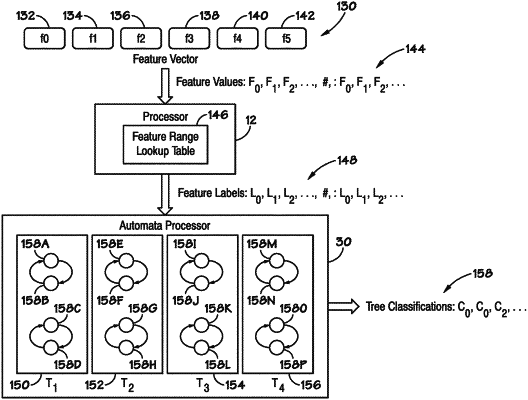| CPC G06N 20/20 (2019.01) [G06N 5/01 (2023.01); G06N 20/00 (2019.01)] | 20 Claims |

|
16. A system, comprising:
a first processor configured to:
receive a feature vector corresponding to input data;
generate a feature label vector based at least in part on concatenating a plurality of feature label values accessed in a look-up table corresponding to the feature vector;
generate one or more identification chains to implement a decision tree according to respective ranges of values; and
output an image file comprising an indication of the one or more identification chains and output the feature label vector; and
an automata processor comprising a plurality of state transition elements associated in a matrix, wherein the automata processor is configured to:
receive the image file from the first processor;
program one or more state transition elements of the plurality of state transition elements with the one or more identification chains based on the image file, wherein, once programmed, a respective subset of the one or more state transition elements implement a respective identification chain of the one or more identification chains;
receiving the feature label vector; and
determining a classification of the input data based on the decision tree at least in part by streaming the feature label vector to respective state transition elements of the one or more state transition elements, causing the one or more identification chains to determine a classification of the input data in parallel to each other.
|